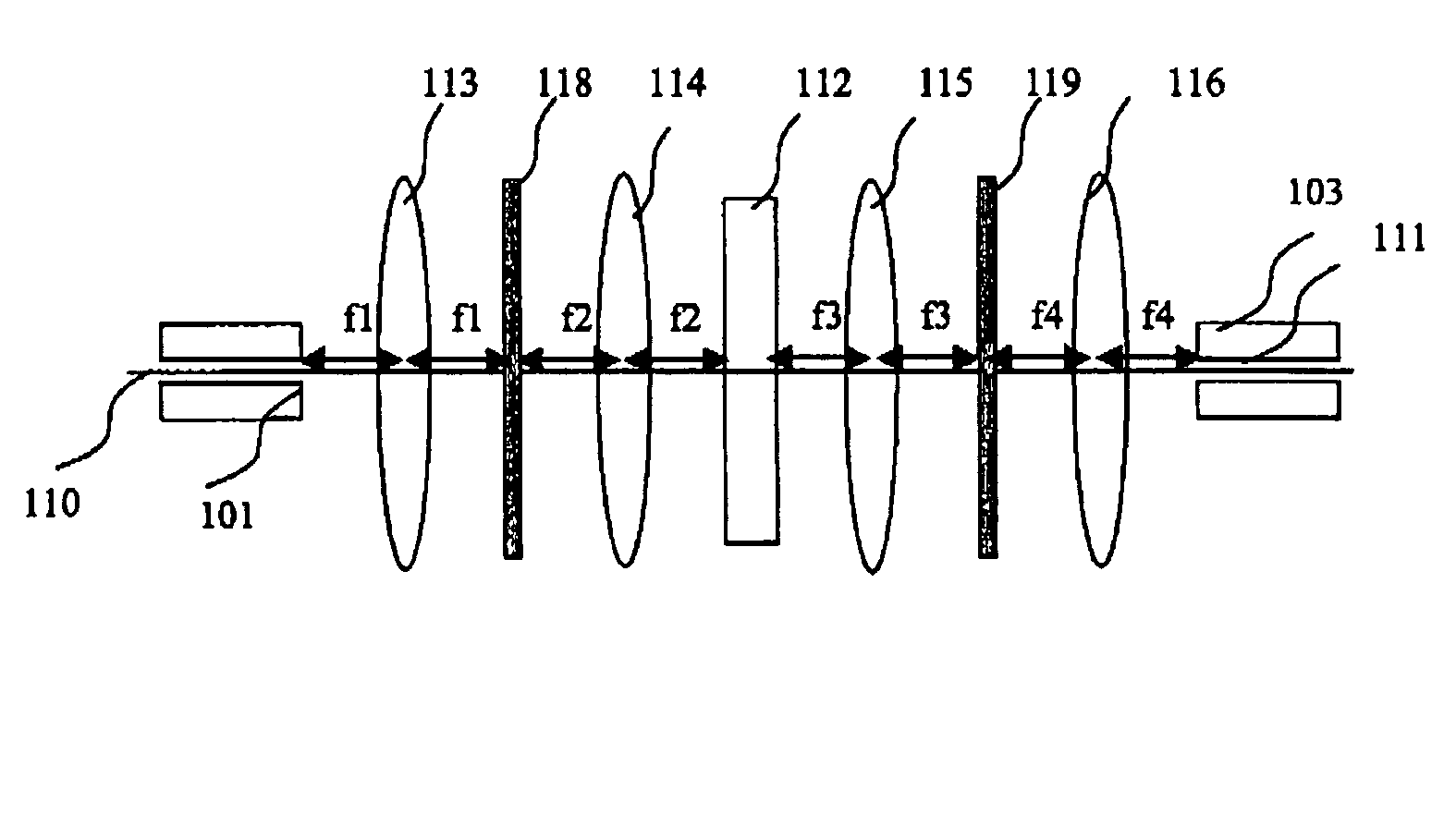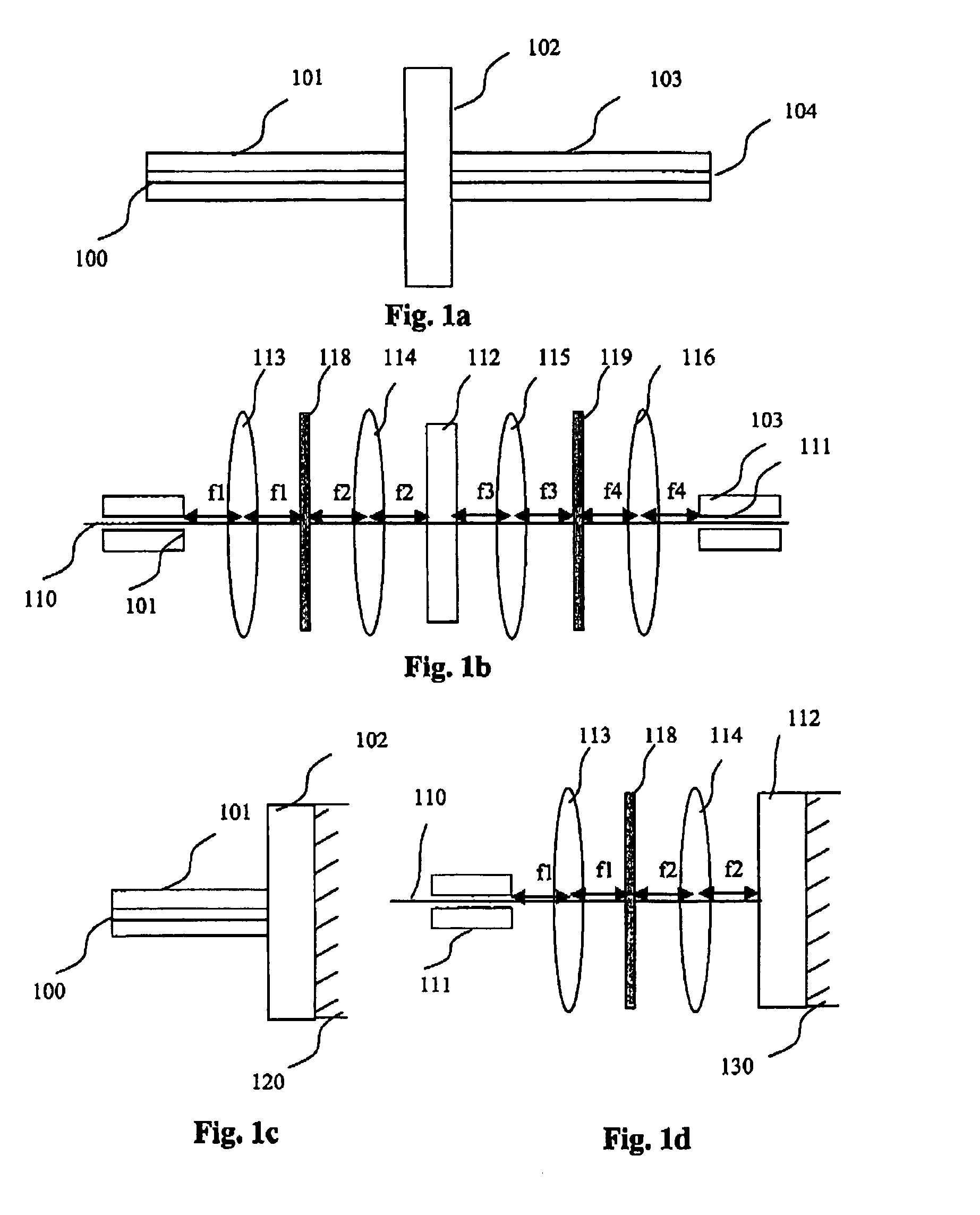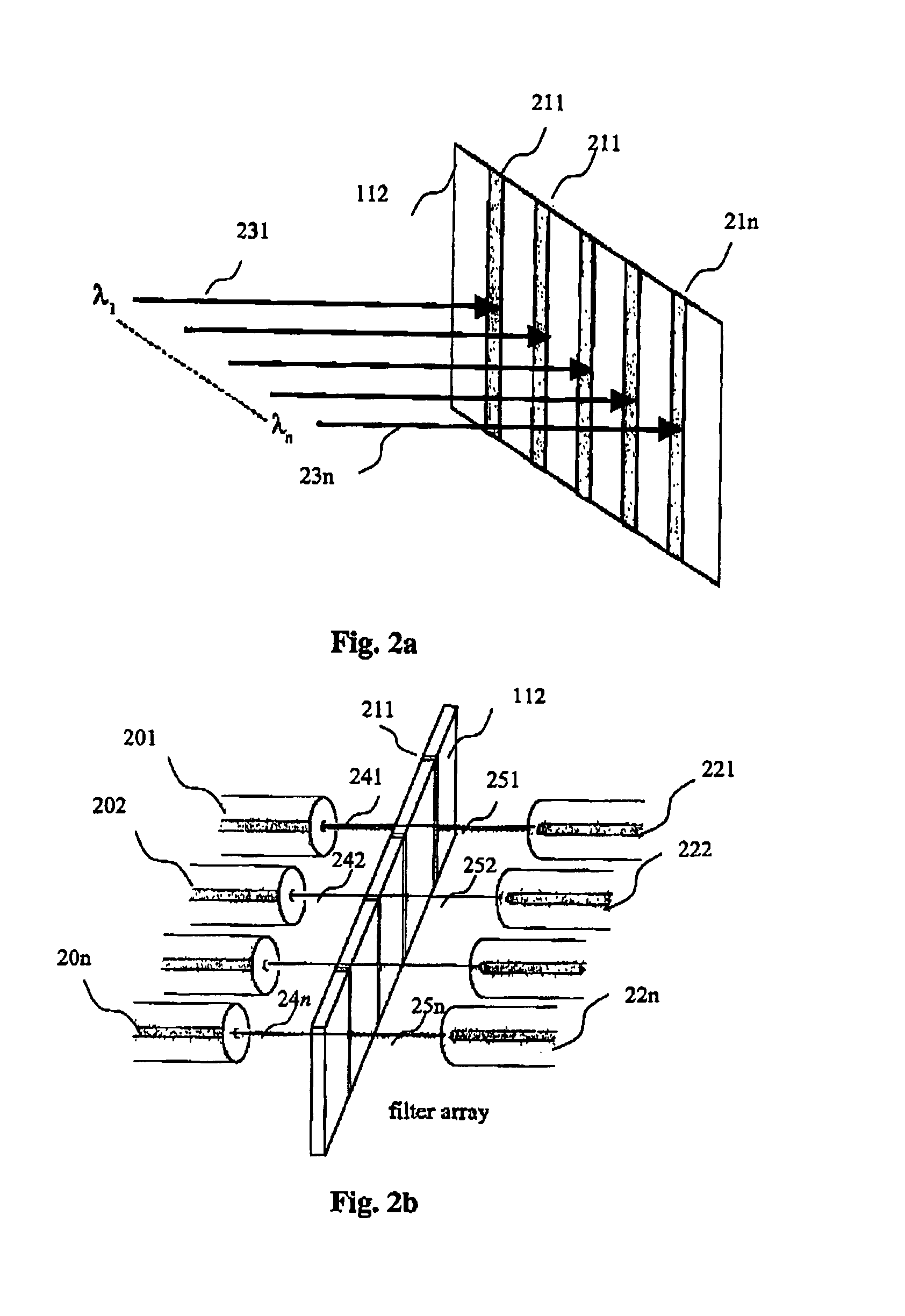Spatial phase filter for light beams, system and corresponding method
a technology of spatial phase filter and light beam, applied in the field of optical attenuators, can solve the problems of not being able to adjust parameters via programming, inconvenience of not being able to optimise the coupling of modes of greater order, and not being able to optimise alternatives in respect of coupling coefficients, etc., to reduce the size of the active zone, reduce the loss of resolution nor additional bandwidth constraints
- Summary
- Abstract
- Description
- Claims
- Application Information
AI Technical Summary
Benefits of technology
Problems solved by technology
Method used
Image
Examples
Embodiment Construction
[0091] The overall principle of the invention lie in a category of filters allowing for an optimal decoupling of the energy injected into a single mode optical fibre.
[0092] Among these filters, a category of axial or punctual symmetry filters has the advantage of providing a better alignment tolerance of which some, that will be described, are easier to implant and well adapted to the making of DCE and ROADM.
[0093] A filter type, which in addition has the advantage of optimising the pixel gap well suited for implantation in the form of spatial light modulators (SLM) in the context of making a DCE, is preferably selected for the making of strips or filter arrays. Different technical embodiments are possible according to the technological choice associated with the means for optical attenuating (electro-optic or electro-mechanic) or with the means for transmitting the light beams (fibres alongside the filters, means for focalising, multiplexers or demultiplexers, means for routing, ...
PUM
 Login to View More
Login to View More Abstract
Description
Claims
Application Information
 Login to View More
Login to View More - R&D
- Intellectual Property
- Life Sciences
- Materials
- Tech Scout
- Unparalleled Data Quality
- Higher Quality Content
- 60% Fewer Hallucinations
Browse by: Latest US Patents, China's latest patents, Technical Efficacy Thesaurus, Application Domain, Technology Topic, Popular Technical Reports.
© 2025 PatSnap. All rights reserved.Legal|Privacy policy|Modern Slavery Act Transparency Statement|Sitemap|About US| Contact US: help@patsnap.com



